PowerBuilder Survey 2011 Final Results
Survey summary
- Which versions of PowerBuilder are currently used?
- Types of PowerBuilder projects in 2011
- PowerBuilder and databases
- PowerBuilder and .NET
- Web-Enablement
- Localization
- Other technologies used: Java or .NET?
- What do you think of PowerBuilder?
1. Which versions of PowerBuilder are currently used?
PowerBuilder 11 is currently the most-used version among surveyers. In mid 2010, PowerBuilder 12 was released and 12.5 the following year; within just over a year, 17% of those surveyed have started using the lastest version, most likely due to the number of novel elements in PB 12, the numerous updates (release of 12.5.1), as well as a efforts put forth by Sybase. The previous versions, apart from PB11, have shown a drop in usage with PB7 showing the least significant decrease and PB 10 still being used among a fifth of participants.
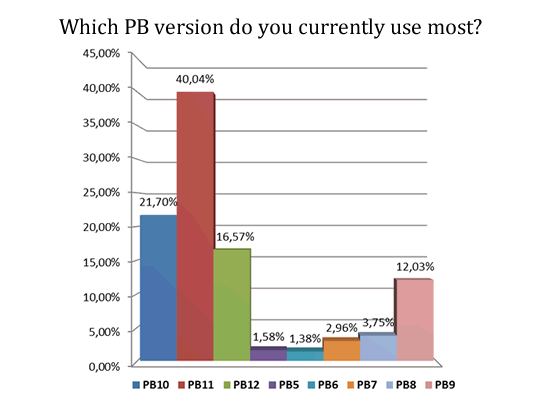
In the next survey, we will be able to track the evolution of PB 12 and 12.5 to see if they follow the trends we have seen in previous version releases.
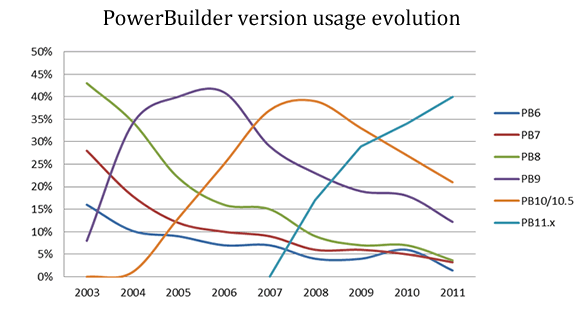
The outlook is promising for recent versions of PB as almost half of participants plan on migrating towards a more recent version of PB; this is a similar figure to last year which is no surprise with the release of 12.5.
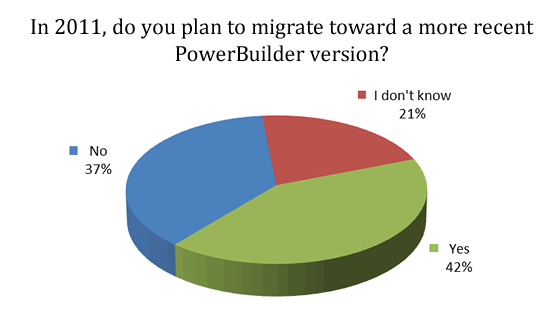
2. Types of PowerBuilder projects in 2011
More than 80% of participants envisage a long-term usage of PowerBuilder within their company; this figure is up from last year where 78% of participants stated that they would be using PowerBuilder for more than 2 years. The number of companies, participating in this survey, who no longer use PowerBuilder has stayed fairly static, with less than a one percent increase.

Small and medium size projects remain the most popular among companies developing with PowerBuilder, with these making up over 90% of the figures.
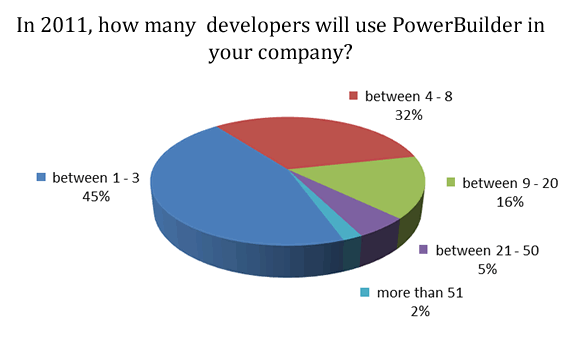
After a decrease in 2010 in the number of IT projects and developers working with PowerBuilder, in part due to global economic downturn in 2009/2010, 2011 seems to have a more promising outlook, with an increase in medium size projects between 4-50 developers and a decrease in small projects comprising of 1-3 developers.

A large percentage of projects remain for the maintenance of existing PowerBuilder applications. Projects concentrated solely on the development of new applications is down by 3%; however, there is a 6% increase in the number of projects that will be both developing and maintaining existing apps.
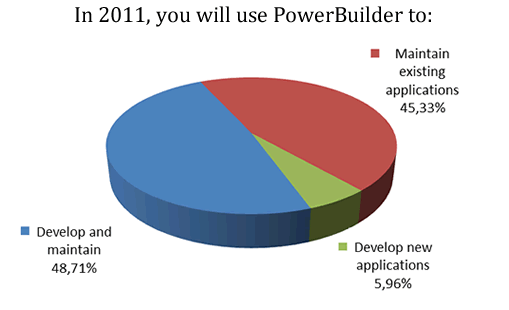
3. PowerBuilder and databases
There are very few changes in relation to last year as to which RDBMS is being used, SQL Server remains the most popular with Oracle not far behind.

There are more respondents who are developing applications with stored procedures than last year. Up from 48%, now 55% of developers are including stored procedures.
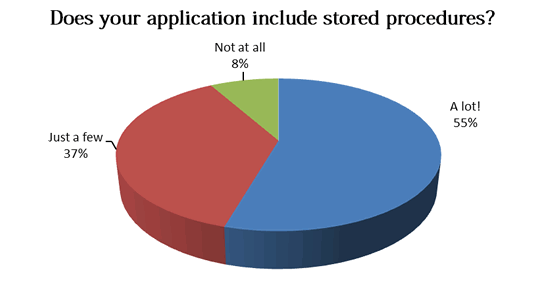
4. PB and .NET
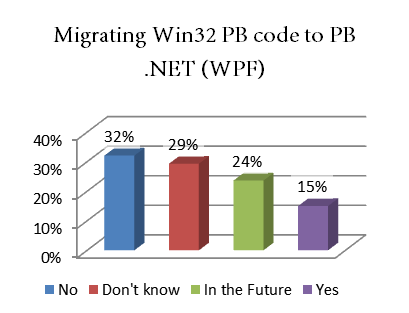
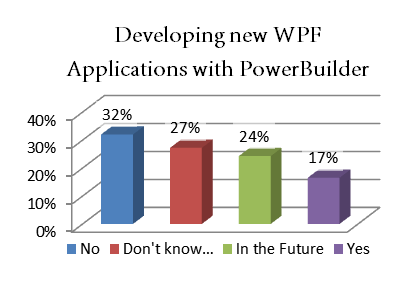
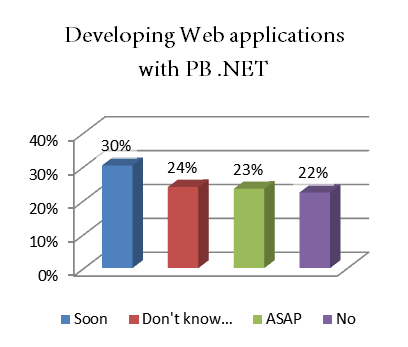
5. Web Enablement
Deploying to the web is clearly a growing trend as more companies seek to improve application accessibility; this is reflected in the 60% who plan to take their applications to the web (up from last year's 56%). More are developing and looking to develop with Appeon for PowerBuilder than last year. Twenty-three percent are already or plan to do this using PowerBuilder.

6. Localization
A majority of participants are keeping their applications unilingual. One third have multilingual applications or intend to make them so to meet the growing demands of a globalized market.

7. Other technologies used
.NET technologies continue to dominate this category, however with less companies using .NET technologies as last year. There has been a decrease in the usage of both .NET webform and .NET winform with an increase in the other forms of .NET technologies. Unlike last year, there has been an increase in Java, C/C++ as well as Oracle usage.
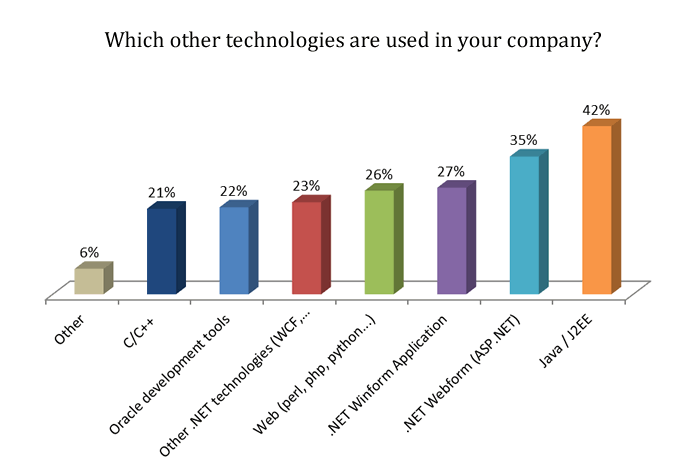
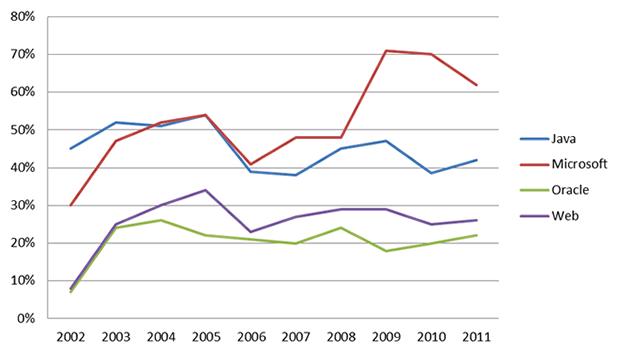
8. What do you think of PowerBuilder?
The feedback on PowerBuilder continues to be strong, with 36% extremely satisfied with it (9/10 or above), and with 47% with a very good opinion (7,8). Only 16% gave PB a mark of 6 or below (which is down from last years 22%).
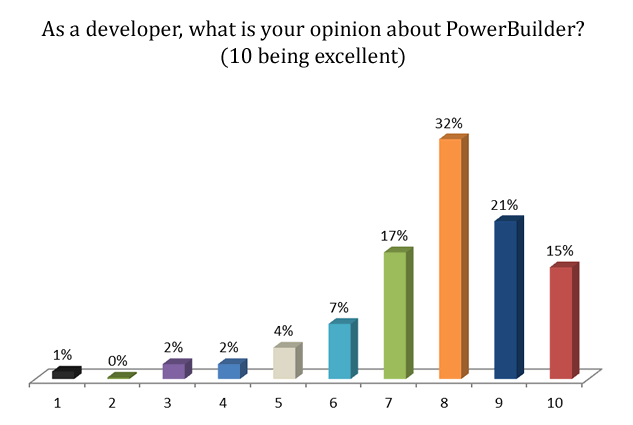
Similar remarks to last year, as developers are still searching for improvements in the same domains. There's an increase in interest this year for web service integration, as last year it came second to .NET, with a decrease in the number asking for Linux compatibility.

